Remember those wooden mazes you would mess around with at the doctor’s office? Endlessly looping — in and out, up and down, end to end; always along the same trajectory, yet always seeming as though there were infinite possibilities? The work of Portland-based artist, Benjamin Ewing is much like that. Jazzy dialogues, in the form of abstract grayscale line work, loosely invade every corner of the canvas like the endless thoughts that weave in and out of the mind.
Spanning a variety of fields — fine art, photography, and print, to name a few — Ewing’s work is constantly in conversation with itself and maximizes the power of texture and form. Clean, minimal design juxtaposed with raw emotion, and always executed in a clean and crisp pastiche. I caught up with Ewing to discuss these dialogues.
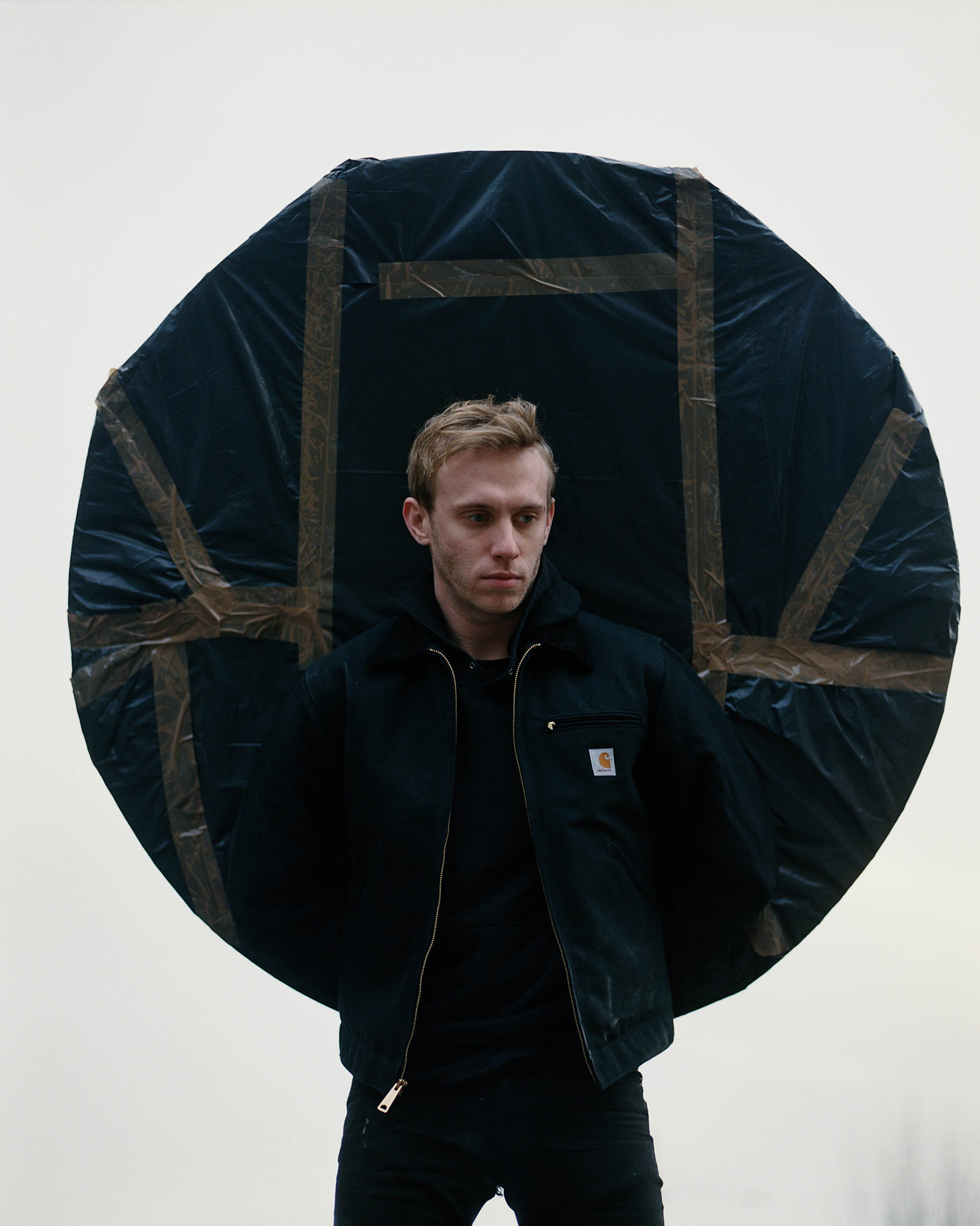
I’d like to know about your time growing up in Minnesota and how your earliest memories of art making began?
I grew up out in the country on a small farm and spent a lot of time outdoors. I’d take my camera and disappear for most of the day taking photos. My dad had an extensive woodshop in our barn so we always had access to building materials and tools. I learned how to build and stretch canvases at a pretty young age. I experimented a lot with vinyl stencils on wood and glass and made several pieces on canvas as a teenager. I can’t remember a specific time or an age when it all “began,” but I grew up in a very encouraging environment for me to create in.
Outside of art, were there any other hobbies that you were passionate about that may have informed your aesthetic?
I played guitar pretty seriously growing up and have always had a close relationship with music and how it affects my work. It still functions as a huge source of inspiration for me. I try to listen to as much music as possible, you never know if the track might inspire a new direction.
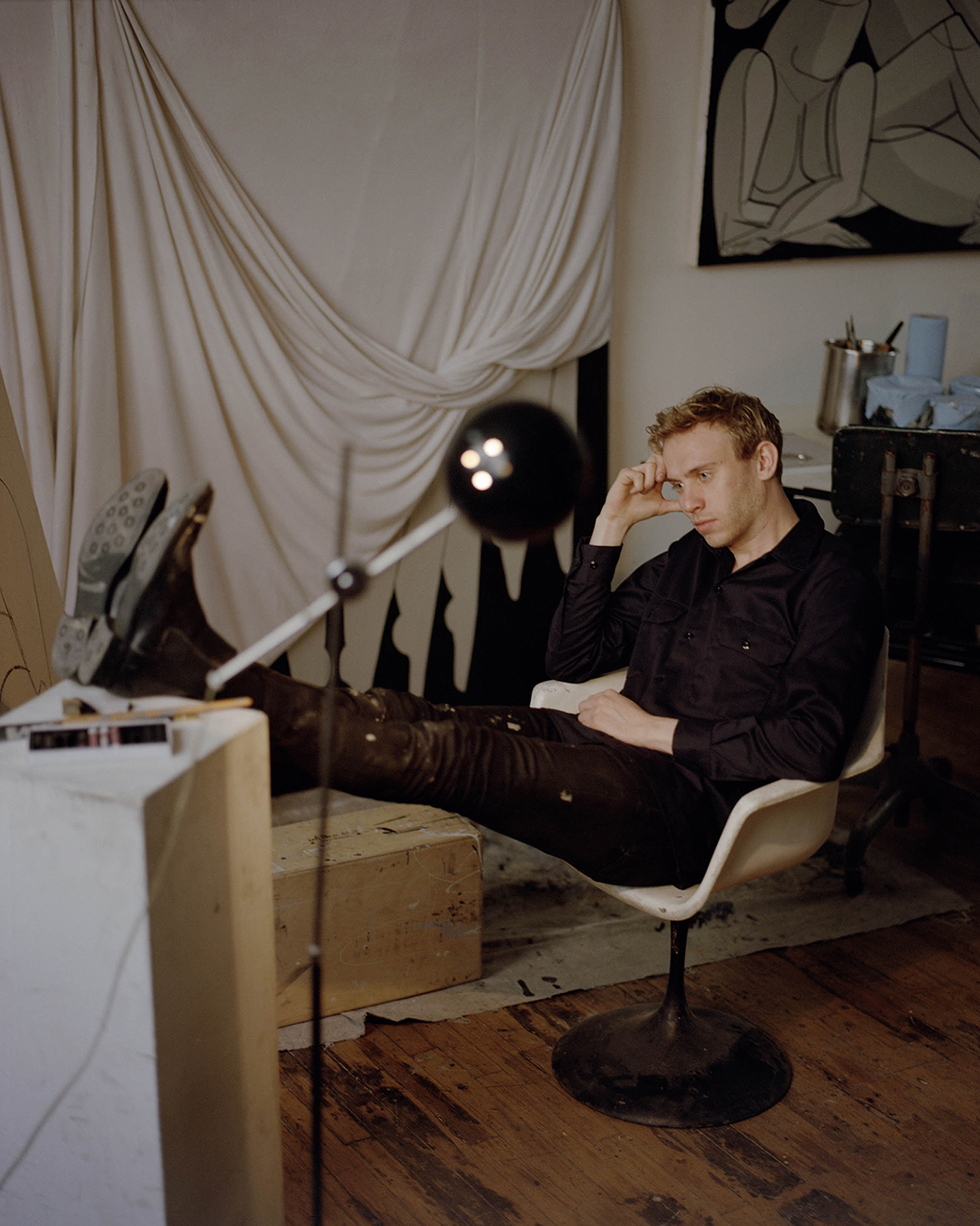
Describe your affinity to Portland and why you choose this city to live and work in over other creative hubs in America.
There’s an exciting conversation happening here in Portland that I’m honored to be a part of. I feel I can better champion not only my own work but the work of other Portland artists to create a new scene that Portland hasn’t encountered before. Utilizing the growth of the city as a resource for new life and culture, I’m on the ground floor and am able to establish a new creative hub. I love working in larger cities like Los Angeles and New York for their own reasons, but Portland really feels like home.
As a multi-disciplinary artist — spanning the fields of print design, fine art, and photography — is there a particular medium you favor most, and one to which you aim to explore in the future?
I love each medium for its own reasons. I currently favor fine art as it fosters a much different editing and feedback process. I get to be much more indulgent in exploring topics, techniques, and materials in a way I’m not able to in design and photo work. I hope to explore more complex mediums in the future, such as sculpture and architecture, to bring the work into a new context.

Talk about your design studio, Aesthetic, and how you balance the client-based work with that of your artistic practice.
Utilizing fine-art and design simultaneously is extremely interesting to me. Each one informs the other, in ways they simply can’t function independently. No matter how serious of an artist you are, every designer should have their own side hustle of tangible work. It feeds you in a way that can’t be edited by a third party but also exercises critical thinking from a different perspective. I’m having more and more conversations with designers about the growing need for tangible mediums in their own workflow. The stronger you become as an artist only strengthens your work as a designer and vice versa.
Inspiration is a tricky source to pin down, a term that most artists and designers will bury when it comes to actually getting work done from day to day. But when you reflect on what consistently informs your practice, what would you say some of those things are?
You’re 100-percent right. It’s difficult to pinpoint exact sources of inspiration but it’s more about staying aware of your surroundings and how you let those feelings and ideas in. Personally, I have developed several pools of reference materials over the years. Whether that be a digital archive of images, playlists, objects or physical folders of print collateral. When I begin to isolate specific ideas or feelings, I have plenty of resources to pull from when need be. I highly recommend starting your own database of references, not only does it inform future work, but it’s incredibly helpful to look back on what was moving you years prior…to see what sticks and what you’ve moved on from.
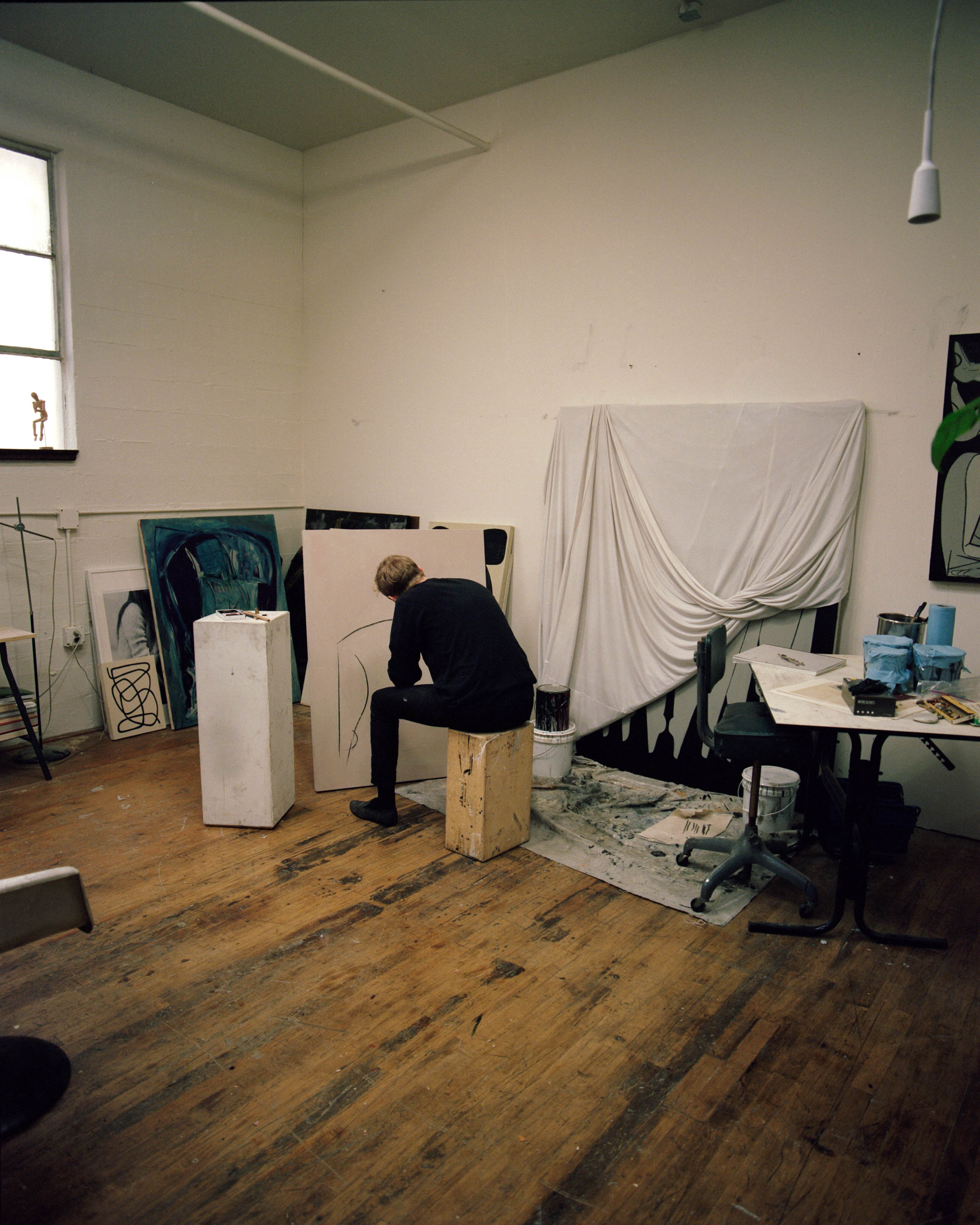
Describe your process from early idea to final execution.
Concepts usually steep for quite a while and will naturally present themselves as they recur. I draw a lot, usually for a few hours every night, hashing out compositions and various postures. They eventually evolve from simple gestural drawings to a clearer concept where I can really hone in on color choices, dimensions, mood, etc. I am constantly experimenting with how tight of a leash I give myself when it comes to developing and executing new ideas. Sometimes I’ll simply put on some music and just go for it, continuing to riff until I find something valuable (equally as rewarding as it is risky). Other times, I’ll exhaust a concept through dozens of sketches before I even build the canvas. I’m continuing to learn which one feeds me most effectively and produces the best outcome.
Your marks are hypnotizing in a way, where hundreds of figures and possibilities arise in the mind and constantly change. Is there a certain figure or theme you yourself see reoccur in your work?
I’ve found that I keep coming back to a specific posture and mood that continues to show itself in each piece. I try to keep the forms abstract enough so that each viewer can see their own version of the work, but there’s always a specific mood or narrative implied. I try to keep a rotation of my work in my own living space so that I can spend more time with each piece and let them inform future directions. What I love about the line work is that it acts as a focal point to really get lost in, as you reflect on the day or wrestle with new ideas. I find it extremely meditative.
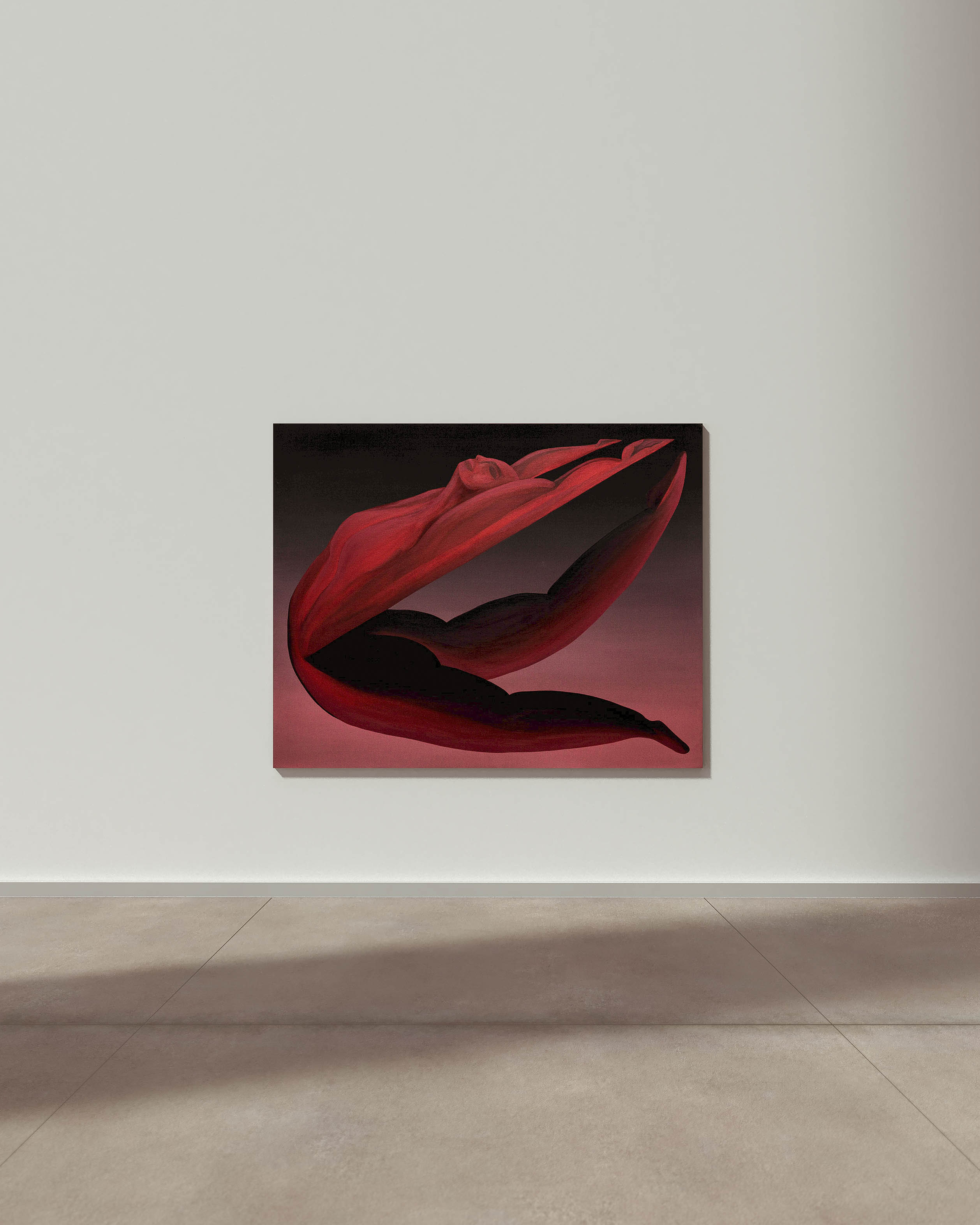
Your work feels like Jazz on the canvas. Do these marks also develop along an improvisational trajectory or a more premeditated way?
That is quite the compliment, as I am constantly playing Dizzy Gillespie and Charlie Parker in my studio. It depends on the piece. Some work undergoes multiple drafts, while other work is a bit more spontaneous. I experiment with various materials and their relationship with the canvas. Sometimes I’ll lay down various types of rope, chain or wire to dictate the composition of the lines. It provides a much more interactive space for execution.
You state that you would love to one day work alongside the creative team of the Olympics. If you were to meditate on what you would personally like to achieve alongside this team, what would it be?
I’ve always been fascinated with the culmination of athletics, design, and art that surrounds the Olympics. Those worlds usually don’t have much overlap, let alone on the world stage. The Olympics have always been a symbol of unity for the world and a celebration of humanity. I think I’d really want to dig into the culture and contributions of the city they are held in. The buildings, branding, and collateral of the Olympics saturate a city for years after the events. To be able to utilize these designs as a way for citizens to continue to celebrate their culture would be huge. It’s certainly a bucket list item for me and would be an absolute honor to contribute to someday.
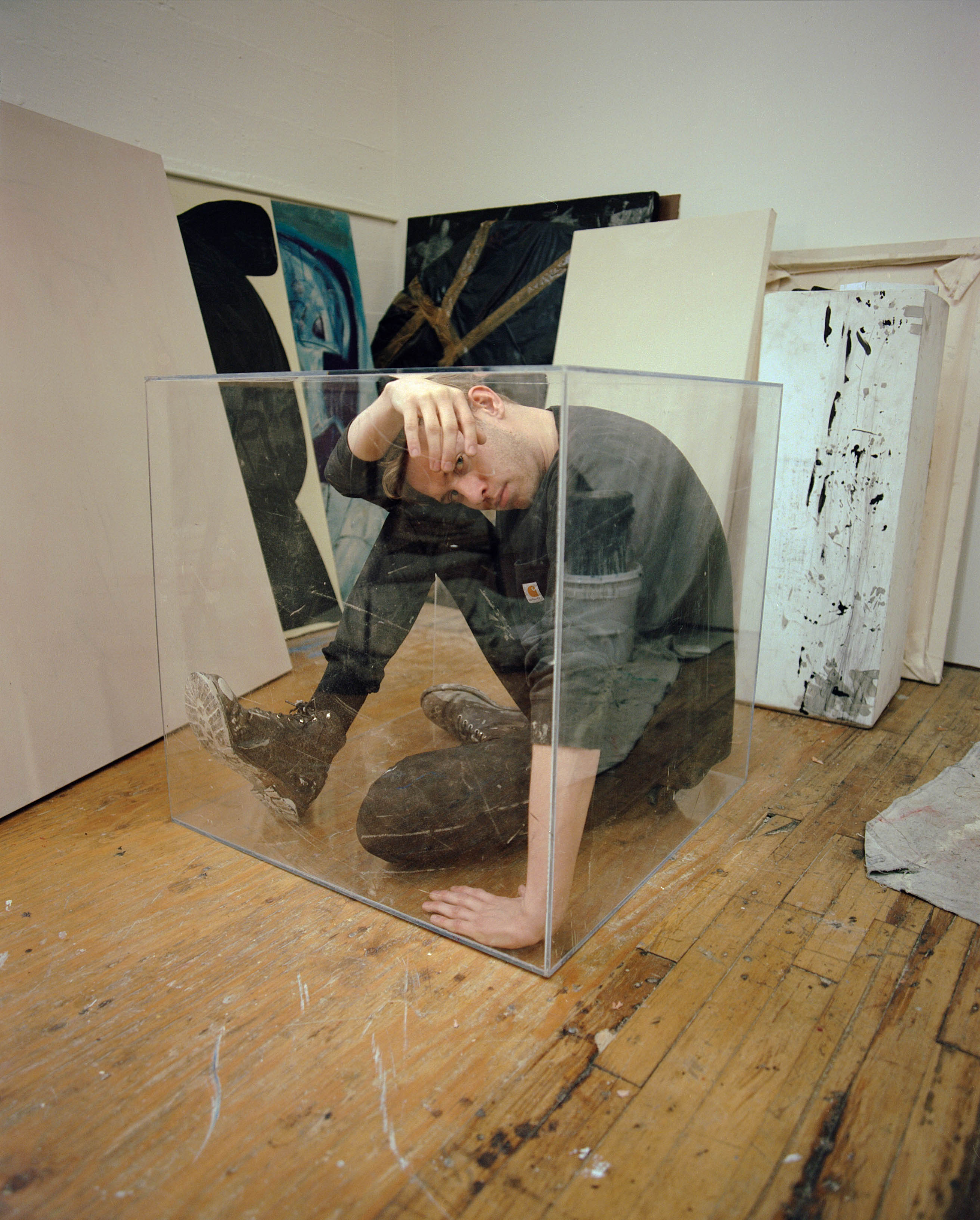
Any future exhibitions or client-based projects you’d like to share word of?
I’ve got a show in the works that will be happening later this spring here in Portland. I will be releasing a new limited edition run of t-shirts in April and a new series of prints in May. I also have a few exciting projects developing overseas in Paris and Copenhagen that I can’t wait to share more about in the coming months.
For more from Benjamin Ewing, follow him on Instagram.
Portraits by Parker Woods.
